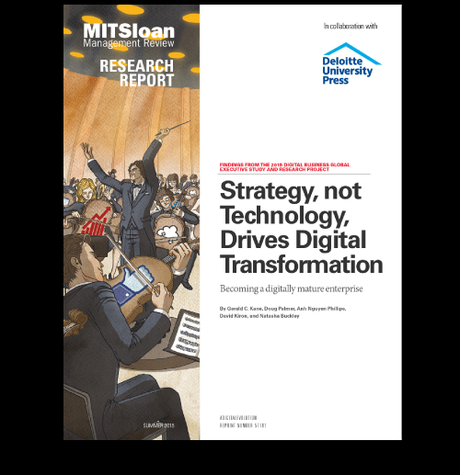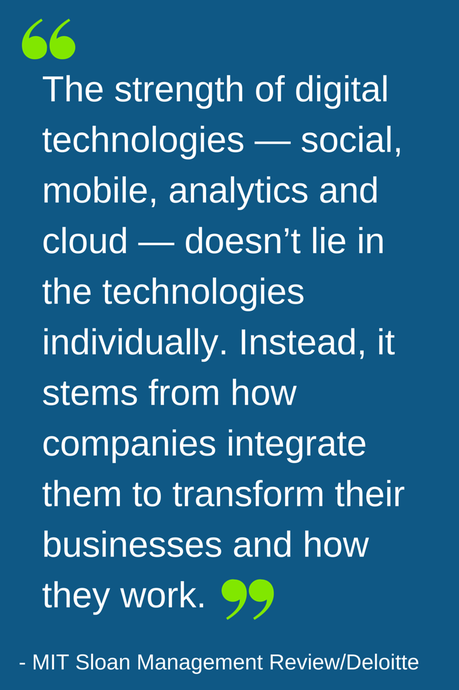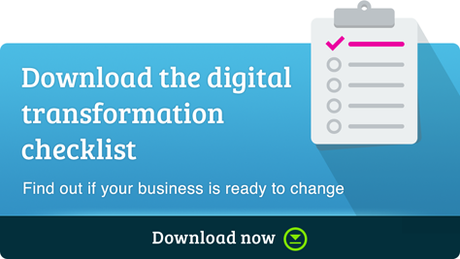Digital transformation is a term that can mean different things to different people. We’ve always thought of it as a process, whereby you embed digital technologies and tools at the heart of your business.
Frequently, the term digital transformation is used to describe the technologies themselves, lending it a technical nuance. There’s absolutely no doubt that having the right systems and infrastructure in place is crucial to digital transformation but it’s about much more than that.
Figuring the how and the what should always be secondary to the why - why do we need to use technology? Will embedding this system help my customers, streamline and aggregate my processes, help build revenues? If you haven’t done this thinking, you can’t begin to invest in technology. The strategy must come first.
A new report from MIT Sloan Management Review and Deloitte’s 2015 Digital Business Global Executive Study and Research Project, drawing on data from 4,800 executives perfectly demonstrates this point.

The findings in ‘Strategy, Not Technology, Drives Digital Transformation: Becoming a Digitally Mature Enterprise’ reveal that digitally mature businesses are those who focus on how investing in digital technologies can transform the way they work. Those businesses who focus only on individual technologies to solve specific business problems are less digitally mature.
Becoming Digitally Mature
Research shows that businesses that attain high levels of digital maturity are more competitive, take more risks, adapt their processes and products more effectively and retain the best employees.
If you’d like to develop the digital maturity of your business, it’s worth bearing the key findings of this report in mind. We've summarised these below:
Six Identifiers of Digital Maturity
-
Digital Strategy Drives Digital Maturity
Among the companies scoring higher for digital maturity, more than 80% of respondents reported their business had a ‘strong and coherent’ digital strategy. At the other end of the scale, this dropped to just 15%. -
A Powerful Digital Transformation Strategy Has Scope
Less digitally mature organisations took a more focused approach, using technology to solve specific problems and developing digital strategies based on operations. More digitally mature organisations took a wider approach, building their digital strategy to transform their business. -
Truly Digital Businesses Build Skills to Carry Out Strategy
The research found that more digitally mature businesses were 4x more likely to invest in skills for their employees, than organisations at the other end of the scale. -
Your Employees Want to Work for a Digital Leader
An overwhelming majority of respondents, aged 22 to 60, reported their desire to work for digitally savvy businesses, demonstrating the need for employers to continually offer the best digital opportunities. -
Taking Risks Becomes a Cultural Norm
Digitally maturing organisations are more comfortable taking risks than those at the other end of the scale, in some cases even viewing failure as a precursor to success. -
Leading the Digital Agenda from the Top
More digitally mature organisations were twice as likely to have one individual or group leading digital transformation, and the employees of these organisations reported greater confidence in the digital fluency of their leaders.
For a more in-depth look at the findings, download the full report.

How to Develop the Digital Maturity of Your Business
It’s important to note here that achieving digital maturity is a work in progress, even for the most advanced businesses. As digital technologies develop, so too do their applications for your business, so try not to view digital maturity as a destination, but more of an important journey to keep your business competitive.
One thing that won’t age is the need to create a digital strategy before investing any time or money in technologies. You’ll need to assess what your current digital capabilities are, identify what you want to achieve and create a plan with digital at its heart that will help you get there.
Start with strategy, and embed the technology to fit, not the other way around.


